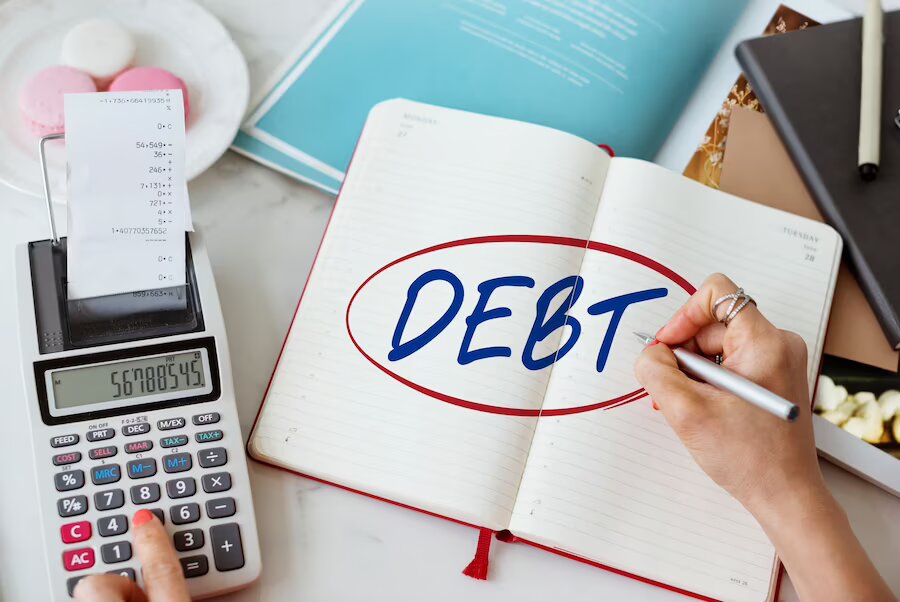What Is Debt Recycling?
5 Mins Read
Published on: 28 April 2023
Last Updated on: 16 September 2024

toc impalement
Debt recycling is a financial strategy that has gained popularity in recent years. This method utilizes equity from your property or investments to generate additional income that can then be used to pay off non-deductible debt such as a mortgage or personal loan. This approach has been heralded as a game-changer among people seeking to increase their wealth and financial freedom.
This article will cover all aspects of debt recycling, such as its advantages and risks, how it fits into financial plans to meet specific goals, and whether debt recycling could help homeowners, property investors, or self-employed professionals take control of their finances while creating a secure financial future.
Understanding Debt Recycling
Debt recycling is a strategy designed to help reduce non-deductible debt while increasing investment returns. Simply put, debt recycling involves borrowing against the equity in your home or investment property to purchase income-generating assets such as shares or managed funds; their returns then use to pay down non-deductible debt such as your mortgage. So if you’re wondering, “what is debt recycling?” the simple answer is that it is a financial strategy designed to build long-term wealth and meet financial goals.
There are two approaches to debt recycling: direct and indirect. Direct debit recycling uses equity from your property to purchase income-generating assets; indirect debt recycling increases your existing investment portfolio size. Both approaches have their own set of advantages and disadvantages; which one will work best for you will depend on your individual circumstances.
As an illustration of how debt recycling works, let’s use an example. Let’s assume you own a $1 million home with a mortgage of $500,000. Your savings consist of $200,000 that could go toward paying down the loan, but instead, use it for debt recycling. Borrow against your equity to purchase $200,000 worth of shares or managed funds that produce an annual income of $10,000 that you use to pay down your mortgage balance each year. As your balance decreases and equity grows as your loan balance goes down, additional investments become eligible for borrowing against the equity in your property, allowing further borrowing against equity, which allows more loans as your equity increases so you can purchase more income-generating assets.
Risks Of Debt Recycling
Debt recycling is an effective financial strategy that can provide numerous advantages. One key benefit is wealth creation – by using equity from your home to invest in income-generating assets, debt recycling helps create passive income that helps meet long-term financial goals.
Debt recycling may also help lower your tax liabilities. By using investment income to pay down non-deductible debt, such as your mortgage or loan payments, interest may qualify as a tax deduction and reduce overall taxes due, and increase disposable income.
Debt recycling can give you greater financial independence by diversifying your income sources. Generating passive income from investments may relieve some of the pressure of depending solely on salary/wages as a source of funds, giving you more decision-making freedom and helping you reach your ideal lifestyle goals.
Debt recycling can also help diversify your investments, helping to minimize risk from single investments and increase the chances of long-term returns. By investing in multiple income-generating assets, debt recycling provides greater financial security over time by diversifying investments.
Risks Of Debt Recycling
Although debt recycling offers numerous advantages, it also poses certain risks which should be carefully evaluated. One such risk is rising interest rates on investment loans – this could cause the costs associated with servicing it to increase, impacting cash flow and the ability to repay your debts.
Negative equity can also pose a threat when your property’s value falls below your loan balance and makes borrowing against its equity more difficult; as a result, further debt recycling efforts might become limited or impossible altogether.
Changes to tax laws may also pose a threat to debt-recycling strategies. Tax regulations change over time, and any reduction or elimination of the benefits associated with debt recycling could significantly erode its financial viability and compromise its viability as an approach.
Who Can Benefit From Debt Recycling?
Debt recycling can be an invaluable strategy for building long-term wealth and reaching financial independence, but not everyone is an ideal candidate for debt recycling. Here are a few groups who may find this approach especially fruitful:
- Householders with mortgage debt may reap the most benefit from debt recycling, using the equity in their home to invest in income-generating assets that reduce repayment time while building wealth over time.
- Second, property investors may also find debt recycling to their advantage, using equity from existing properties to purchase additional investments and create a diversified property portfolio that generates rental income streams.
- Thirdly, self-employed professionals like doctors, lawyers, and business owners may benefit from debt recycling. Their income may fluctuate irregularly, so investing can provide passive income streams to help manage cash flow more smoothly.
- High-income earners may also find debt recycling beneficial, using their extra cash flow to pay back investment loans quickly and create wealth more rapidly. This approach can speed up their journey toward financial independence.
Steps To Implement Debt Recycling
Debt recycling can be a complex strategy that requires meticulous planning and execution to be effective. Here are some critical steps you should follow when engaging in debt recycling:
- Assess your current financial situation to determine if debt recycling is appropriate. This may involve reviewing income, expenses, assets, liabilities, and investment goals as part of this assessment process.
- Identify potential investment opportunities that meet both your financial goals and risk tolerance. This may involve researching different asset classes – shares, property, or managed funds – and their historical performance and expected growth prospects.
- Once you’ve identified appropriate investment opportunities, select a debt-recycling strategy tailored to your financial situation and goals. This may involve choosing from different loan structures, interest rate options, and repayment schedules.
- Finally, implement your debt recycling strategy and continuously monitor investments and debt levels to ensure they remain sustainable over the long term. This may involve keeping track of investment performance, tracking debt repayments, and making necessary adjustments.
Conclusion
Debt recycling can be an invaluable strategy for building long-term wealth, reducing tax liabilities, and reaching financial freedom. Though investing can pose some risks, such as higher interest rates, negative equity, tax law changes, and overleverage, they can be managed effectively through careful planning and implementation. Debt recycling offers homeowners with mortgage debt, property investors, self-employed professionals, and high-income earners an effective strategy for diversifying investments and creating passive income streams.
Additionals


















Comments Are Closed For This Article